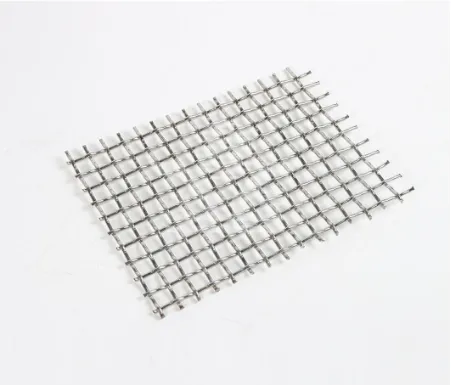Understanding 316 Stainless Steel Perforated Sheets
316 stainless steel is renowned for its outstanding corrosion resistance, making it an ideal choice for various applications, especially in environments exposed to harsh chemicals and saline conditions. Among its many forms, perforated sheets fabricated from 316 stainless steel stand out due to their combination of durability, aesthetic appeal, and versatility.
Composition and Properties
The primary alloying elements in 316 stainless steel include chromium (16-18%), nickel (10-14%), and molybdenum (2-3%). The addition of molybdenum enhances the material's resistance to pitting and crevice corrosion, particularly when exposed to chlorides, such as those found in seawater or certain industrial chemical environments. This makes 316 stainless steel perforated sheets particularly valuable for applications in marine, chemical processing, and food industries.
The mechanical properties of 316 stainless steel are equally impressive. It boasts a tensile strength of around 570 MPa, while its yield strength is approximately 290 MPa, offering robust performance under stress. Furthermore, its ability to withstand high temperatures ensures that it maintains its integrity, even in elevated heat scenarios.
Applications
The versatility of 316 stainless steel perforated sheets allows for a multitude of applications across various industries
. In architectural settings, they serve as both functional and aesthetic elements in facades, sunshades, and railings, allowing natural light to filter through while providing privacy. Their sleek appearance adds modern elegance to buildings and structures.316 stainless steel perforated sheet

In the industrial sector, 316 stainless steel perforated sheets are utilized in filtration systems, where they play a crucial role in separating solids from liquids or gases. Their durability ensures longevity, reducing the frequency of replacements. Additionally, they are commonly found in platforms, walkways, and staircases, providing both safety and support while minimizing weight.
Another significant application is in the food industry, where hygiene and resistance to corrosive substances are paramount. The use of 316 stainless steel in food processing equipment helps maintain cleanliness and prevents contamination, making it a preferred material for breweries, dairies, and food processing plants.
Manufacturing Process
The production of 316 stainless steel perforated sheets involves several steps. Initially, a flat sheet is cut to the desired dimensions. Next, a perforation process follows, which may involve punching, drilling, or laser cutting to create a myriad of hole patterns. The size, shape, and spacing of the holes can be customized based on specific requirements, allowing designers to achieve both functional and decorative effects.
Following perforation, the sheets often undergo finishing processes to enhance surface quality and resistance to corrosion. Techniques such as pickling and passivation improve the material’s inertness and aesthetic appeal, leading to a smooth and shiny surface that is easier to clean and maintain.
Conclusion
316 stainless steel perforated sheets are an essential material in various industries due to their unique properties and versatile applications. Their ability to withstand corrosive environments while offering both aesthetic and functional benefits makes them a popular choice in both architectural and industrial settings. As technology advances, the methods of producing and utilizing these sheets will continue to evolve, ensuring that they remain a key component in modern engineering and design solutions. Whether in a high-rise building or a food processing facility, 316 stainless steel perforated sheets stand as a testament to the balance of innovation and practicality in material science.
-
The Best Metal Mesh Solutions: Expanded Aluminum Metal vs. Expanded Stainless Steel Metal
NewsSep.10,2024
-
Round Perforated Sheets vs. Hexagonal Perforated Sheets vs. Embossed Perforated Sheet Metal
NewsSep.10,2024
-
Perforated Metal Sheets
NewsSep.10,2024
-
Experience The Excellence Of Stainless Steel Grating
NewsSep.10,2024
-
Discover the Versatility Of Metal Mesh Expanded Forming Machines
NewsSep.10,2024
-
Discover The Advantages Of Steel Grating For Sale
NewsSep.10,2024
Subscribe now!
Stay up to date with the latest on Fry Steeland industry news.

